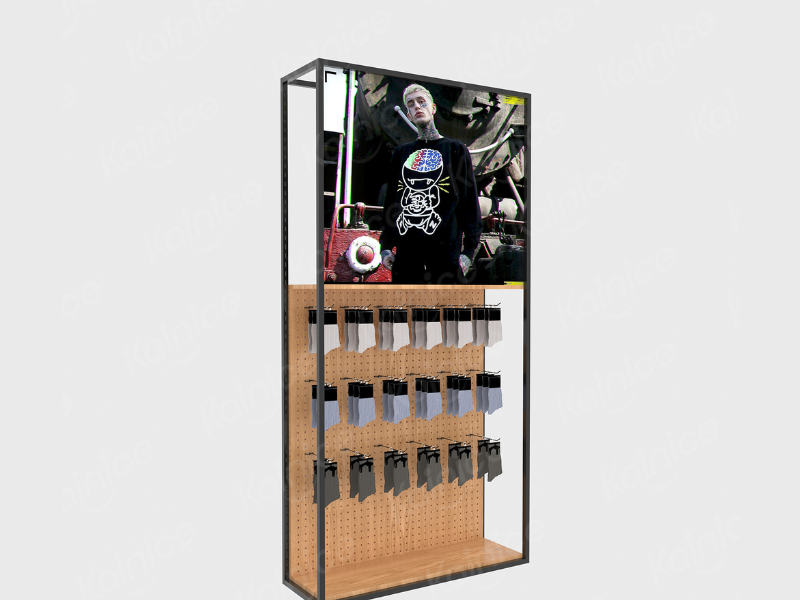Why are modular retail displays so popular today?
In your opinion, have you looked at how retail stores change their layouts more often in these times? One week, a store is focused on minimalism, while the other week, they have a full-on interactive pop-up. The modular retail display trend helps fuel this change. These displays are more advanced than just shelving units. They are powerful marketing components. But what is causing so much buzz? What are the reasons for this?
The ability to change in the moment
The greatest component with these modular displays is their flexibility. The pace of retail is a huge consideration. What consumers want one day can be completely different the next day. These displays are very helpful in those situations.
Traditional, fixed installations that are built for a single purpose are complex and require time to alter. Modular displays, on the other hand, are easy to change and are much more versatile. A brand can take the same components and produce a complex configuration for a trade show, a small-sized kiosk for a mall, or a chic, minimalist boutique set for in-store displays. The "build once, use endlessly" concept ends the age of spending a fortune on designing completely new displays. Marketing teams can now adoptions new campaigns, seasonal changes, or even supply new opportunities as time and expense are drastically reduced. This concept permits displays to be disassembled and reassembled to multiple other different configurations, thus using the same set of materials for multiple applications.

Cost-effective as well as flexible
Economically, the cost of modular displays is much lower than that of custom built single use counterparts. Although the initial cost of custom built displays might be more than that of modular systems, the return on investment makes custom built displays a very bad choice in the long term.
Taking a look at the traditional model - a company pays a large amount for a custom display for one event, only to have to pay for storage later or worse, throw it out. This is a huge drain on resources. Modular systems turn this on its head. Since they are designed for reuse and reconfiguration, the cost per use drops significantly for each use. The ability to reuse components across different campaigns and geographies allows for greater marketing spend efficiency. Also, their reusability reduces material waste and the cost of storage and shipping of numerous one-time use displays are also savings. With modularity, it is a display. With modularity, it is an investment that pays off over time, a long lasting asset.
Aligning with Sustainability Trends
The retail industry, with its history of disposable marketing materials, is under pressure to clean up its act.You have free access to the information of this work, it is no longer a niche concern but a consumer expectation and a strategic imperative for modern businesses. The retail industry, with its history of disposable marketing materials, is under pressure to clean up its act. That's why modular retail displays have become the foremost example of this shift.
Sustainability is also rooted at the heart of modular design which focuses on reusability and adaptability of materials. Since the displays can be refreshed annually and can last for years, the brand saves on material and limits waste. This is also in line with the increased focus on the principles of the circular economy. Further supporting the green credentials of these displays are materials such as recycled metals, ethically sourced FSC certified wood, and low VOC finishes. This is not only a good thing for the brand but also a compelling marketing narrative. The brand image is enhanced as the shoppers are aligned with the values and displayed on a display that advocates for sustainable practice.
Promoting brand experience and visibility
Ultimately, modular display systems do remarkably well in establishing and sustaining a strong brand experience which helps in enhancing visibility. In a time where capturing the interest of a customer is the utmost goal, bots have to create a distinctive and memorable brand presence.
Modular systems allow standardization to be achieved across all branded materials, and even at strategic physical locations and pop-up events. This allows local agile customizations to be added while the brand remains recognizable across locations with core colors, materials, and designs. Modular design systems are flexible enough to include new interactive technology systems like digital displays, LED lights, and even creative QR code scanners. Shifting the display from a static design to an interactive, multi-sensory model presentation geared to customer interaction is an improvement to the modular systems. The brand is further demonstrated through the touchable qualities of the wooden pegboard and the custom metal hook, and even more through the lasting impression the consumer is left with.
